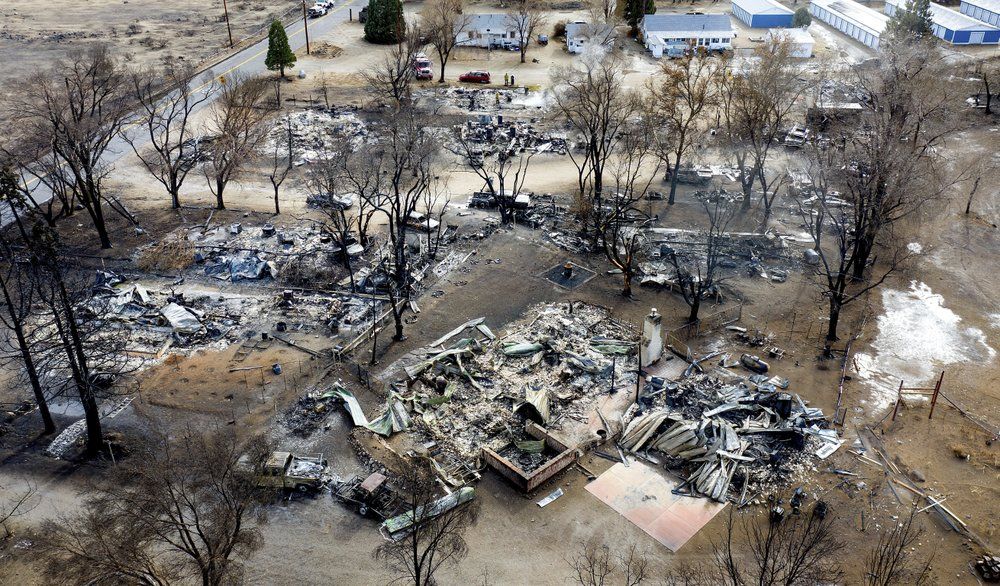California sets home hardening standards to lower fire risks

SAN FRANCISCO (AP) As consecutive years of catastrophic wildfires in California drive up the cost of insuring homes, state regulators on Monday announced a step toward creating incentives for retrofitting older homes to make them more resilient to fires.
Insurance Commissioner Ricardo Lara said his office will work with four state agencies charged with wildfire response and prevention to establish statewide standards for home hardening — from replacing single to dual-paned windows to creating fire-resistant landscaping — that he hopes will reduce wildfire risks and make insurance more affordable and available in California.
“I want to see companies reward efforts by putting money back into (homeowners’) pockets,” Lara said Monday.
The move comes as insurance providers increasingly drop coverage in fire-prone regions of the state due to heavy losses incurred from some of the most destructive wildfires in the state’s history. According to the most recent data collected by Lara’s office, between 2018 and 2019 insurers dropped residential policies statewide by 31%.
Meanwhile, enrollments in the FAIR Plan, the state’s bare-bones fire insurance plan of last resort, jumped by 225%.
For homeowners such as Chris Swarbrick, enrollment in the plan means paying four times the rate he paid seven years ago for his house in the Sierra Nevada community of Pollock Pines. And just last month, the plan increased rates for rural homeowners like him by an average of 15.6%.
“My taxes and insurance equal to my monthly mortgage,” the Sacramento fire captain said. “If my house burns, I’ll take my money and leave because I can’t afford to live in my own house.”
He said he replaced wood sidings with cement boards, cleared brush and added a fire hydrant and water pump to his property, but no insurance agent will agree to verify the work he has done to better protect his home against fires.
Lara has been advocating for incentivizing home hardening as a solution to the growing crisis, noting that when car owners demonstrate they’re safe drivers, insurance companies usually give them a discounted rate.
A few insurance companies, including the FAIR Plan, offer discounts for homeowners who make improvements to better protect their homes against fires. But Lara wants to see broader discount programs and thinks a uniform set of standards, based on scientific research, will give homeowners, communities and insurance companies a shared strategy for reducing wildfire risks.
He called the convening of fire safety, disaster and insurance experts to determine the mitigation standards “long overdue.”
The participating agencies include the Governor’s Office of Emergency Services, the California Department of Forestry and Fire Protection, the California Public Utilities Commission, and Governor’s Office of Planning and Research.
“Both consumers and industry should embrace mitigation because we are at a crossroads, where we all realize that we have to reduce the overall fire risk and unfortunately, fires are not going to go away anytime soon,” Lara said.
Insurers cautioned that more research is needed to gauge the mitigation measures.
“Unlike hurricane and earthquake mitigation, the science of wildfire mitigation is far more complex and still developing. While we understand what steps need to be taken, we do not yet have a quantifiable understanding of the impact these risk reduction efforts will have,” said Mark Sektnan, vice president of state government relations at the American Property Casualty Insurance Association,
Insurers paid over $26 billion in claims for the 2017 and 2018 wildfires, and an estimated $7 billion for last year’s wildfires, according to the association.
Researchers working to provide insurance companies a quantifiable figure on the risk reduction measures say they’re making progress but they still have a ways to go.
“But I can see a path to progressively bend down the risk curve and limit the extent of wildfire damages,” said Roy Wright, the head of the nonprofit Insurance Institute for Business and Home Safety.
The institute shared some of its findings for reducing a home’s risk of catching fire on the website: https://disastersafety.org/wildfire/wildfire-ready/